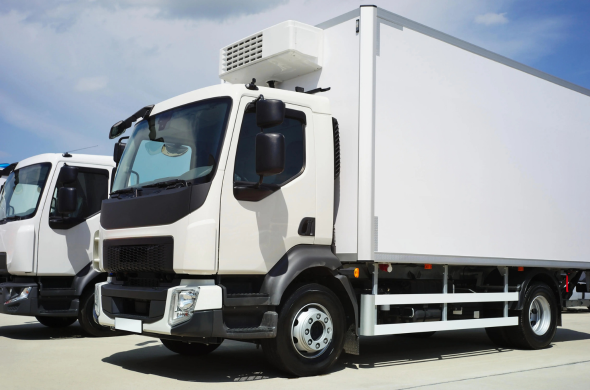If you’re running your own farm, then it’s likely that you’ve already put quite a bit of thought into the best possible livestock feeding strategies. Many factors can affect your animals’ growth, health and productivity, including the feed they eat, the water they drink, the breed of animal, the weather outside and how the animals are being managed.
The key to optimizing livestock health and productivity is to find the right balance between cost-effectiveness and good animal management practices. Luckily, with our agricultural consultancy services, you can make your farming operation more efficient, affordable, and profitable.
When it comes to livestock feeding strategies, there are several factors to consider. What feeds work best for a specific breed? Which foods do cattle prefer? How should a farmer monitor feed quality and safety? These are just some of the questions you should answer if you want to ensure that your livestock is healthy and well-fed. Below we will take you through some smart livestock feeding strategies you can use to get the most out of your farming activities.
What is Smart Livestock Feeding?
Smart livestock feeding is a farming approach that ensures livestock are fed on high-quality nutrition, using digital technologies to monitor what and when they are eating. The end result is healthier animals that don't need as much feed or veterinary care.
By keeping costs down, farmers can maximize their profits through selling leaner, more efficient livestock. This is especially important with issues such as diseases, and shortage of feeds affecting so many farms around the world.
Smart livestock feeding methods leverage the latest technologies that include, IoT, big data and predictive analytics, Information and Communication Technologies (ICT), artificial intelligence and genomics.
Different Methods of Feeding Livestock
Choosing the right method of feeding your livestock isn’t always easy, but it can have a significant impact on your animals’ growth and your farm’s sustainability. There are different ways of feeding your animals, including scheduled feeding, full feeding, limit feeding, free access feeding, and supplemental feeding.
Scheduled Feeding
Scheduled feeding involves dropping hay, grain, or supplements onto a feeding platform at a specific time every day. It is an easy way to make sure that all your animals are getting exactly what they need when they need it.
Limit Feeding
This method of livestock feeding is exactly what it sounds like – giving animals their full, daily requirement of food over a certain period of time. It requires measuring how much food to give them.
Full Feeding
The general rule of thumb of full feeding is giving your animals enough food to maintain their weight. It’s an excellent method for cutting costs without affecting quality. Full feeding is suitable for animals that live in enclosed areas and use the same amount of energy every day.
Free Access Feeding
Also known as free-choice feeding, this method allows animals to roam around a large area of land as they feed on what they want. Free access feeding is useful in areas that have a hot climate during the day and cool temperatures at night. The animals can rest under shade during the day as they await to graze at night when the climate is cool.
Supplemental Feeding
In supplemental feeding, you provide additional feed to animals that rely on grazing. It is a great way to make sure that your cattle, sheep, and other animals are getting all of their nutritional needs met.
Smart Livestock Farming Technologies
With the ever-growing population, demand for livestock products has increased insanely in recent times. However, meeting these needs has been a major challenge due to climate change and the shortage of arable land. Animal farming alone uses almost 80 percent of global arable land and up to 33% of freshwater.
To curb the challenges of livestock farming and ensure a consistent supply of animal products, there is a need to incorporate smart farming technologies into our agriculture. Here are some of these systems.
Automation
Automation is one of the most effective methods of keeping your livestock safe, healthy, and thriving. Through monitoring of animal health and behavior, you can save time to focus on tasks with higher value. Automation helps you set up breeding schedules, feeding times, and even move livestock from one place to another.
Cyber-Physical Systems (CPS) and Internet of Things (IoT)
In a number of markets, including agricultural, smart devices have been rapidly adopted. Many farmers have started using IoT-based sensors to manage their farms. These devices collect data about livestock and transmit them to cloud databases for processing.
The CPS and IoT framework enables you to know more about your farm and take decisions accordingly. It has several applications in precision agriculture, including soil mapping and tracking livestock health.
Trading Platforms
A platform is B2B/B2C ecommerce model that makes it easier for livestock farmers to sell their products to buyers and consumers (farm-to-home), as well as buy relevant input products needed for farming.
Information and Communication Technologies (ICT)
Important technologies such as mobile phones, wireless networks, and the internet are increasingly becoming useful in monitoring livestock. Today, you can easily use a mobile app to check on your herd’s health from anywhere or scan a code on a cow’s ear tag to learn more about it.
Data Analytics & Machine Learning
Farm data analytics is widely used by farmers to improve production through decision-making. Collecting, storing, and analyzing data can help you to know when it’s time to buy or sell animals, manage your water supply, or how much feed your animals need. In addition, machine learning can help learning your data and make predictions to ensure better planning and productivity expectations.
Cloud Computing
Cloud computing involves using a network of cloud-based systems to store, manage and process data. It is an inexpensive way for farmers to keep their important files instead of cluttering their home offices.
Genomics
Genomics studies genetic makeup of animals, including but not limited to: the structure, function, evolution and mapping of DNA. It can help predict future profitability potential by informing the farmer at an early stage of the growth potentical and productivity of the specific livestock through its genotype and phenotype, thereby making different animal selection and strategic breeding decisions. This will help the farmer mainly improve productivity, quality and survivability by accelerating breeding cycles and improving genetics.
What are The Advantages of Smart Feeding?
There are plenty of reasons to add smart feeding to your farm. Some benefits of automated livestock feeding include:
- Better tracking of productivity
- Time-saving
- Reduced labor costs
- Better planning
- Improved accuracy
Who Stands to Benefit from Smart Feeding?
Anyone involved in agriculture or raising livestock can benefit from smart feeding. From farmers who want to increase their productivity to third-world farmers looking for an alternative to traditional food donations, smart feeding brings with it a slew of advantages as mentioned earlier. Not only farmers will benefit, but as well players across the value chain and end-consumers, who will get better prices, quality, consistency, availability and traceability. In addition, advancements in the industry will improve impact on climate change through efficient use of natural resources and adopting sustainable practices mainly through the use of technology.
Agribusiness Consultancy Services
Ollen Group is one of the leading agricultural consulting companies in the Middle East & Africa region (MEA) offering agricultural consultancy services with turnkey solutions from strategy to execution, as well as design & supervision. Our expert farm consultants will help your through your journey.
Read our latest insights, ideas, and perspectives that explore the trends shaping the future of business and society. Our consultancy services go hand-in-hand with these insights, confirming our position as industry leaders. Get in touch to find out more about our consulting services and industry expertise.



